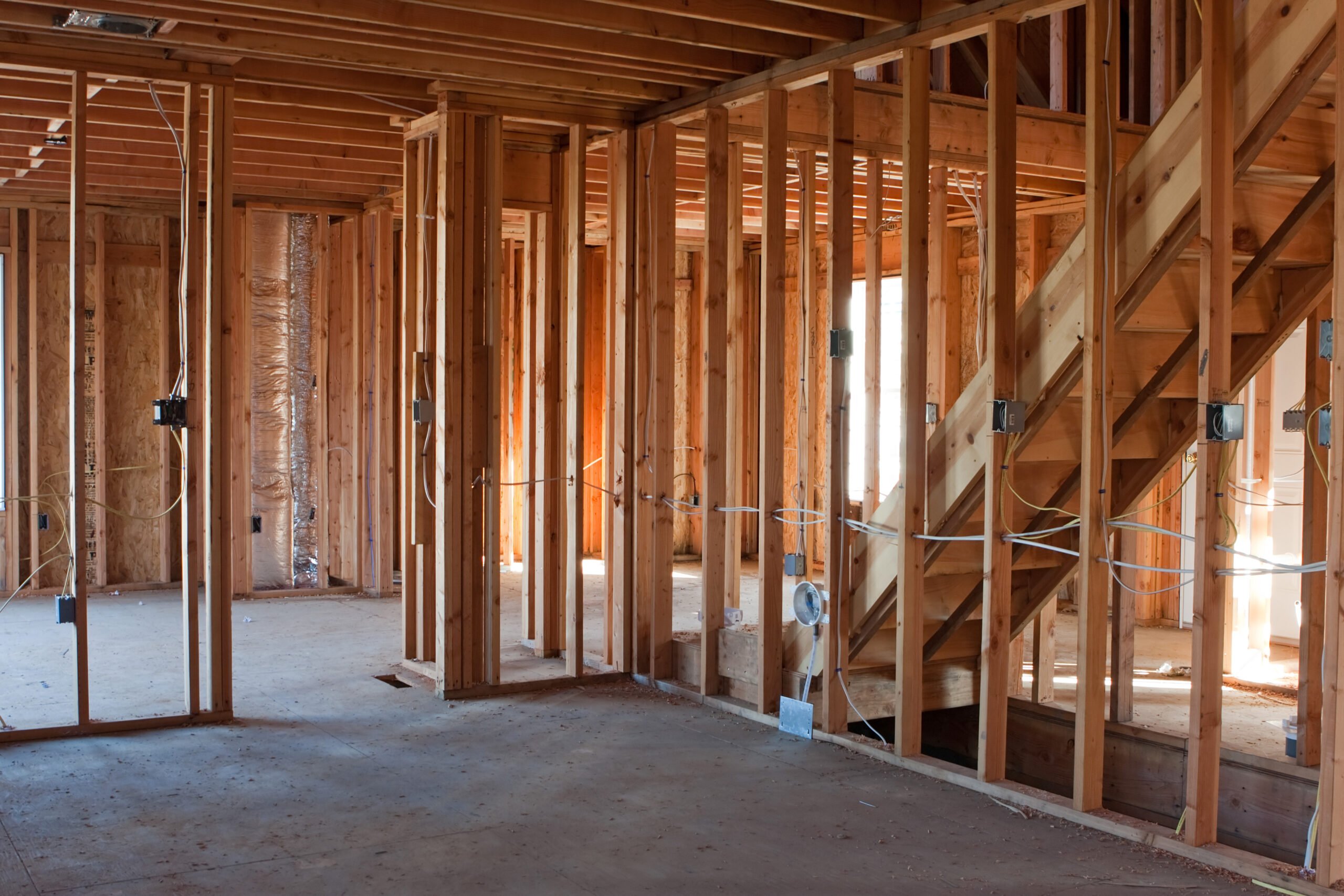For many beginner real estate investors, flipping houses is one of the most exciting ways to enter the market. Shows like Fixer Upper and Flip or Flop have popularized house flipping, inspiring new investors to find distressed properties, renovate them, and sell for profit. But one of the biggest questions for first-time flippers is: “Can I get financing if this is my first project?” While first-time flippers may face a learning curve with the time flipping process, experienced flippers often benefit from faster closings, better loan terms, and more efficient project management due to their track record. The time flipping a property can vary greatly depending on your experience, with seasoned investors typically moving through the process more quickly and efficiently.
The answer is yes — there are options available if this is your first fix-and-flip. The difference between first-time and experienced flippers often comes down to loan options, rates, and the challenges faced during the project. Lenders are especially interested in the details of the deal, such as the property’s value, after-repair value, and renovation plan, rather than just the borrower’s credit. To succeed in a fix and flip project, it’s important to understand the skills needed, including budgeting, project management, and market analysis. Understanding your options and preparing properly is the key to success.
Introduction to Fix and Flip Financing
Fix and flip financing is a specialized short-term loan designed to help real estate investors purchase, repair, and renovate investment properties quickly. These flip loans are ideal for house flippers who need fast access to funds to buy, renovate, and either sell or rent out properties within a short period—often four to six months. Unlike traditional lenders, fix and flip financing offers more flexible qualification requirements, making it accessible to investors with poor credit or limited experience. This type of financing covers not only the purchase price but also renovation costs, allowing investors to focus on maximizing the property’s value and potential return. Once the project is complete, the loan can be paid off through the sale of the property or refinanced into a longer-term loan type if the investor chooses to rent the property. For new and experienced investors alike, fix and flip loans provide a practical way to enter the real estate market and grow their investment portfolio.
How First-Time Flippers Can Secure Financing
Treat your fix and flip as a business from the start, considering business structures like LLCs or corporations to facilitate access to financing. There are several ways to secure financing for your first flip, and choosing the right approach can make a significant difference.
Financing your first flip involves knowing the different loan types, budgeting correctly, and building a reliable team. Small business owners and small businesses may have access to specific financing options, such as business lines of credit or hard money loans tailored for real estate investments. Fix and flip loans can also be compared to other types of financing available to investors, such as traditional mortgages or business loans. Here’s how to get started:
Budgeting for Your Flip
Start by estimating your total project costs, including purchase price, renovation expenses, and holding costs. Decide whether to use your own money or seek external financing for your project, as this choice can impact your cash flow and risk. Accurate budgeting helps you avoid surprises and ensures you have enough funds to complete the flip.
1. Know the Market
Before committing to a property, it’s important to understand the real estate industry as a whole, as this broader perspective can inform your market research and help you spot emerging opportunities. Research local trends and areas with high return potential. Developing key skills—such as analyzing market trends, identifying good investment opportunities, and interpreting data—will increase your chances of success. Networking with local real estate agents or other investors can provide insights into neighborhoods that are ripe for investment. Understanding the market helps ensure your first flip is profitable.
2. Set a Realistic Budget
Budgeting is critical, especially for beginners. Estimate renovation costs, purchase price, and any unforeseen expenses. Careful budgeting and accurate cost estimation can help you save money during your flip by preventing overspending and identifying areas to cut unnecessary costs. Over-budgeting slightly is wise — unexpected costs can erode profits if you’re not prepared. The 70% Rule is a helpful tool: multiply the property’s After Repair Value (ARV) by 70% to determine the maximum purchase price.
3. Hire a Contractor
Unless you plan to do the renovations yourself, hiring a professional contractor is essential. Research local contractors, check references, and choose someone who can deliver quality work on time and within budget. A reliable contractor ensures your property is ready to sell quickly.
Understanding Fix and Flip Costs
Understanding all costs is crucial for successful real estate investments and developing a sound investment strategy. Commercial property and commercial real estate can also be targets for fix and flip investments or used as collateral.
Purchase Price: Negotiating the right price is key. Hard money lenders may finance up to 90% of the purchase price.
Loan to Cost (LTC): Lenders may finance up to 90% of total costs (purchase + renovations), requiring 10% down.
Loan to Value (LTV): Typically capped at 70% of the property’s current value. The available equity is calculated as property minus any existing debts or liens, which determines how much financing you can secure.
Down Payment & Closing Costs: Plan for both when securing financing.
Renovation Costs: Hard money loans often cover renovations as part of the total loan, but hiring a contractor adds additional costs.
After Repair Value (ARV): Calculate projected resale value to ensure the investment will be profitable.
Loan Repayments: You must pay back the loan according to the agreed schedule, and paying on time is essential to avoid foreclosure or extra fees. This includes paying ongoing costs such as interest and lender fees.
Refinancing: Some investors refinance into a rental property loan after the flip to hold the property for income.
After Repair Value (ARV)
After Repair Value (ARV) is a cornerstone concept in flip financing and a key metric for real estate investors. ARV represents the estimated market value of an investment property after all planned repairs and renovations are completed. Hard money lenders rely heavily on ARV to determine how much they are willing to lend, what interest rates to offer, and the overall terms of the loan. A higher ARV can unlock more favorable terms, such as lower interest rates and higher loan-to-value ratios, which can significantly impact your bottom line. To accurately assess ARV, it’s wise to work with a good real estate agent who understands the local market and can help you evaluate comparable properties. By creating a realistic renovation plan and targeting improvements that boost the property’s value, house flippers can maximize their profits and earn income from their investment properties. Understanding ARV is essential for making informed decisions and ensuring your flip is a financial success.
Types of Fix and Flip Financing for First-Time Investors
1. Hard Money Loans
Hard money lenders specialize in fix and flip financing. They focus on the property’s value and potential rather than your credit history. Hard money loans are faster to secure than bank loans and often provide interest-only payments. The interest rate for a hard money loan is typically higher than traditional loans, making it a key consideration for borrowers when evaluating affordability and repayment terms. They can also fund bridge loans, allowing you to renovate and refinance the property into a rental (BRRRR strategy).
2. Private Money Loans
These loans come from individuals or small investment groups. They are flexible and can be funded quickly but may be less reliable for larger projects due to limited capital availability.
3. Traditional Bank Loans
Banks can offer lower interest rates, but underwriting is strict and the process can be slow. For first-time flippers, meeting minimum credit score and documentation requirements can be challenging, making banks less ideal for time-sensitive deals.
Interest Rates and Fees
Interest rates and fees for fix and flip loans can vary depending on the lender, loan program, and your financial profile. Hard money lenders typically charge higher interest rates and upfront fees than traditional loans, but they offer the speed and flexibility that real estate investors need for time-sensitive deals. Interest rates for flip loans often range from 10% to 18%, and you may encounter additional costs such as origination fees, closing costs, and renovation fees. While these costs can add up, the ability to secure quick funding and flexible terms is often worth it for investors looking to move fast in a competitive market. It’s important to carefully review all loan terms and calculate the total cost of borrowing to ensure your investment strategy and cash flow remain on track. By understanding the full scope of interest rates and fees, you can make informed decisions and avoid surprises during your flip.
Good Credit and Loan Eligibility
Having good credit can help real estate investors secure better terms on fix and flip loans, such as lower interest rates and higher loan-to-value ratios. However, good credit is not always a requirement for eligibility. Hard money lenders tend to focus more on the value of the investment property and your experience in real estate investing than on your credit score. This means that even investors with poor credit can qualify for flip loans, though they may face higher interest rates or need to provide additional collateral. Working with a professional real estate agent and an experienced hard money lender can help you navigate the loan process, identify the best loan programs for your situation, and secure favorable terms. Whether you have good credit or are working to improve it, there are financing options available to help you succeed in your next real estate investment.
Down Payment Requirements
Down payment requirements for fix and flip loans can vary depending on the lender and the specific loan program. Some hard money lenders may offer 100% financing, but more commonly, you’ll be expected to provide a down payment of 10% to 20% of the purchase price. The exact amount is often determined by the loan-to-value (LTV) ratio, which compares the loan amount to the property’s value. For example, if a lender offers an 80% LTV, you’ll need to cover the remaining 20% as your down payment. Understanding these requirements is crucial for real estate investors, as it impacts your cash flow and the overall risks involved in flipping houses. By calculating your down payment in advance and ensuring you have enough funds set aside, you can better manage your finances, minimize risk, and position your flip for maximum profit.
Tips for First-Time Flippers Seeking Loans
Prepare your financials: Even if a hard money lender prioritizes the property, having clean financial documentation helps.
Start small: A single-family home or 1–2 unit property is easier for a first flip than a multi-family building.
Understand lender requirements: Each lender has specific LTV, LTC, and DSCR guidelines. Research them ahead of time.
Have a solid plan: A detailed renovation plan and clear profit projection can make a first-time flipper more attractive to lenders. Be sure to plan your selling strategy in advance to maximize returns when the property appreciates.
By following these tips, you can set yourself up for success in your real estate investments.
Wrapping Up
Yes, first-time flippers can get financing. Hard money loans, private money loans, and bank loans all offer pathways to fund your first project. By understanding costs, knowing your market, building a strong team, and selecting the right lender, beginner investors can successfully complete their first fix and flip and start building a profitable real estate portfolio.
Contact Nvestor Funding today to learn more about fix and flip loan options for first-time investors and start your next real estate project.





